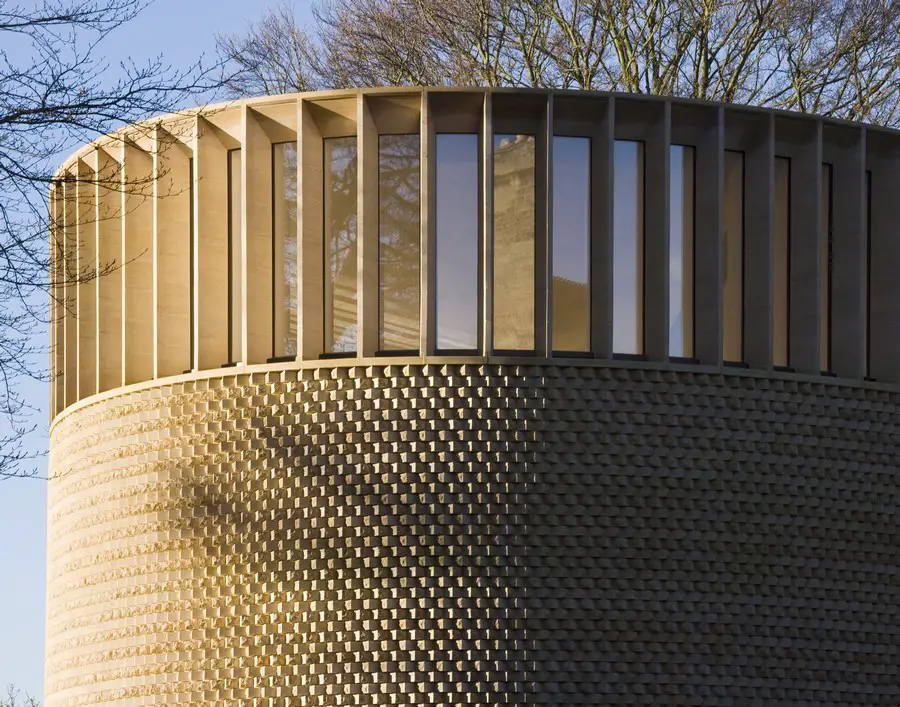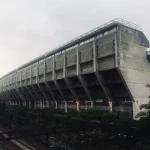London Royal Academy of Arts Royal Academicians 2019, Architecture News
Royal Academy of Arts Royal Academicians
Níall McLaughlin Election in Architecture Category News, London, England, UK
16 June 2019
Royal Academy of Arts Royal Academicians 2019
Royal Academy of Arts announces election of two new Royal Academicians and two new Honorary Royal Academicians including Architect Níall McLaughlin
The Royal Academy of Arts has elected John Akomfrah as a Royal Academician in the category of Painting and Níall McLaughlin as a Royal Academician in the category of Architecture, following a recent General Assembly. In addition, international artists Carmen Herrera and Kara Walker have been elected as Honorary Royal Academicians.
Royal Academicians
Níall McLaughlin RA Elect (born 1962)
Category of Membership: Architecture
Níall McLaughlin architect:

photo from RIBA
Niall McLaughlin was born in Geneva in 1962. He was educated in Dublin and studied architecture at University College Dublin between 1979 and 1984. He worked for Scott Tallon Walker for four years and established his own practice in London in 1990. He designs buildings for education, culture, health, religious worship and housing.
He won Young British Architect of the Year in 1998, received the RIBA Charles Jencks Award for Simultaneous Contribution to Theory and Practice in 2016 and elected an Aosdána Member for Outstanding Contribution to the Arts in Ireland in 2019. Niall exhibited in the Venice Biennale in 2016 and 2018 and has been shortlisted for the RIBA Stirling Prize in 2013, 2015 and 2018.
West Court, Jesus College, Cambridge, England, by Niall McLaughlin Architects:
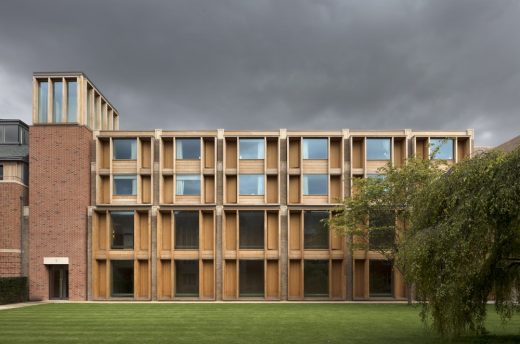
photo © Nick Kane
Niall is Professor of Architectural Practice at the Bartlett School of Architecture, University College London. He was a visiting professor at the University of California Los Angeles from 2012-2013, and was appointed Lord Norman Foster Visiting Professor of Architecture at Yale for 2014-2015.
Significant projects from the practice include the Bandstand (Bexhill 2001), Pier Cafe (Deal 2006), Dirk Cove House (Cork 2004), ARC Building (Hull 2005), Goleen House (Cork 2008), Bishop Edward King Chapel (Oxford 2013), Olympic Athletes’ Housing (London 2012), Peabody Housing (Whitechapel 2015), Somerville Student Residence (Oxford 2010), West Court Jesus College (Cambridge 2017) and The Sultan Nazrin Shah Centre (Oxford 2017).
Niall lives in London with his wife Mary and his children Iseult and Diarmaid.
Bishop Edward King Chapel, Cuddesdon, England, by Niall McLaughlin Architects:
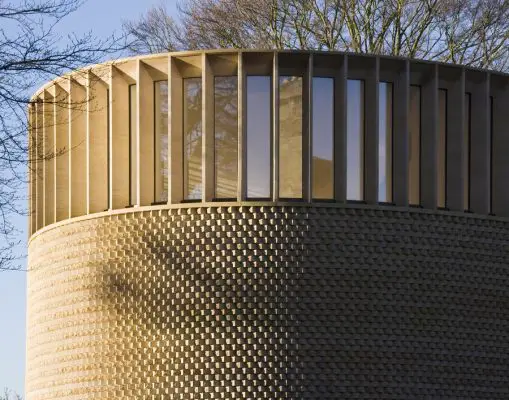
photograph © Niall Ferguson
Chapel in Oxfordshire
John Akomfrah RA Elect(born 1957)
Category of Membership: Painter
John Akomfrah is a widely respected artist and filmmaker, whose works are characterised by their investigations into memory, postcolonialism, temporality and aesthetics and often explores the experiences of migrant diasporas globally. Akomfrah was a founding member of the influential Black Audio Film Collective, which started in London in 1982 alongside the artists David Lawson and Lina Gopaul, who he still collaborates with today. Their first film, Handsworth Songs (1986) explored the events surrounding the 1985 riots in Birmingham and London through a combination of archive footage, still photos and newsreel. The film won several international prizes and established a multi-layered visual style that has become a recognisable motif of Akomfrah’s practice. Other works include the three-screen installation The Unfinished Conversation (2012), a moving portrait of the cultural theorist Stuart Hall’s life and work; Peripeteia (2012), an imagined drama visualising the lives of individuals included in two 16th century portraits by Albrecht Dürer and Mnemosyne (2010) which exposes the hardship experienced by migrants in the UK.
In 2015, Akomfrah premiered his three-screen film installation Vertigo Sea (2015), that explores what Ralph Waldo Emerson calls ‘the sublime seas’. Fusing archival material, readings from classical sources and newly shot footage, Akomfrah’s piece focuses on the disorder and cruelty of the whaling industry and juxtaposes it with scenes of many generations of migrants making epic crossings of the ocean for a better life. Akomfrah presented his largest film installation to date, Purple, in 2017 at the Barbican in London, co-commissioned by Bildmuseet Umeå, Sweden, TBA21—Academy, The Institute of Contemporary Art/ Boston, Museu Coleção Berardo, Lisbon and Garage Centre for Contemporary Art, Moscow. The six-channel video installation addresses climate change, human communities and the wilderness. More recently, Akomfrah debuted his work Mimesis: African Soldier (2018) at the Imperial War Museum in London, commissioned by 1418 Now. The piece explores the often overlooked role of hundreds of thousands of soldiers from across continental Africa in the First World War and features rarely seen archive material. In May 2019, Akomfrah participated in the inaugural, critically acclaimed Ghana Pavilion at the Venice Biennale, with his latest work Four Nocturnes.
Honorary Royal Academicians
Carmen Herrera Hon RA (born Havana, Cuba, 1915)
Core to Carmen Herrera’s painting is a drive for formal simplicity and a striking sense of colour: “My quest”, she says, “is for the simplest of pictorial resolutions” (2012). A master of crisp lines and contrasting chromatic planes, Herrera creates symmetry, asymmetry and an infinite variety of movement, rhythm and spatial tension across the canvas with the most unobtrusive application of paint. As she moved towards pure, geometric abstraction in the post-war years in Paris, she exhibited alongside Theo van Doesburg, Max Bill and Piet Mondrian and a younger generation of Latin American artists, such as members of the Venezuelan Los Disidentes, Brazilian Concretists and the Argentinian Grupo Madi. Her work also chimes with her peers from the U.S. school such as Barnett Newman and Leon Polk Smith. While allied with Latin American non-representational concrete painting, Herrera’s body of work has established, quietly but steadily, a cross-cultural dialogue within the international history of modernist abstraction.
Carmen Herrera was born in Havana, Cuba in 1915. She moved frequently between France and Cuba throughout the 1930s and 1940s; having started studying architecture at the Universidad de La Habana, Havana, Cuba (1938–39), she trained at the Art Students League, New York, (1942–43), before exhibiting five times at the Salon des Réalités Nouvelles, Musée d’Art Moderne de la Ville de Paris, France (1949–53). She settled in New York in 1954, where she continues to live and work. Herrera’s work was the subject of a large-scale survey at the Whitney Museum of American Art in New York (2017), which traveled to the Wexner Center for the Arts in Columbus, Ohio (2017) and Kunstsammlung Nordrhein-Westfalen (K20) in Düsseldorf, Germany (2017–2018). A selection of Herrera’s recent paintings and Estructuras inaugurated Lisson Gallery New York’s 24th Street exhibition space in May 2016. Herrera has also had solo exhibitions at Museum Pfalzgalerie Kaiserslautern, Kaiserslautern, Germany (2010); Ikon Gallery, Birmingham, UK (2009); and Museo del Barrio, New York (1998). She has also been included in numerous group shows.
Herrera was awarded two fellowships from the Cintas Foundation, New York (1966–68) and a grant by the Creative Artists Public Service, New York (1977). Her work is in numerous public and private collections including the Museum of Modern Art, New York; the Whitney Museum of American Art, New York; the Tate Collection, London; the Hirshhorn Museum, Washington DC; The Smithsonian American Art Museum, Washington DC; the Walker Art Center, Minneapolis; the Pérez Art Museum, Miami; the Institute of Fine Arts Boston; Crystal Bridges Museum of Art, Bentonville; Museum Pfalzgalerie Kaiserslautern, Kaiserslautern, Germany; and El Museo del Barrio, New York.
Kara Walker Hon RA (Born Stockton, California, 1969)
New York-based artist Kara Walker is best known for her candid investigation of race, gender, sexuality, and violence through silhouetted figures that have appeared in numerous exhibitions worldwide.
Born in Stockton, California in 1969, Walker was raised in Atlanta, Georgia from the age of 13. She studied at the Atlanta College of Art (BFA, 1991) and the Rhode Island School of Design (MFA, 1994). She is the recipient of many awards, notably the John D. and Catherine T. MacArthur Foundation Achievement Award in 1997 and the United States Artists, Eileen Harris Norton Fellowship in 2008. In 2012, Walker became a member of the American Academy of Arts and Letters. In 2015, she was named the Tepper Chair in Visual Arts at the Mason Gross School of the Arts at Rutgers University. Her work can be found in museums and public collections throughout the United States and Europe including The Solomon R. Guggenheim Museum, New York; The Museum of Modern Art, New York; The Metropolitan Museum of Art, New York; The Tate Gallery, London; the Museo Nazionale delle Arti del XXI Secolo (MAXXI), Rome; and Deutsche Bank, Frankfurt.
Walker’s major survey exhibition, Kara Walker: My Complement, My Enemy, My Oppressor, My Love, was organized by The Walker Art Center in Minneapolis where it premiered in February 2007 before travelling to ARC/ Musée d’Art Moderne de la Ville de Paris; The Whitney Museum of American Art in New York; The Hammer Museum in Los Angeles; and the Museum of Modern Art in Fort Worth. Recent solo exhibitions have been presented at the Art Institute of Chicago; Camden Arts Centre in London; and Metropolitan Arts Center (MAC) in Belfast. In 2014, Walker’s first large scale public project, centered around a massive sugar covered sphinx-like sculpture, was on view at the abandoned Domino Sugar refinery in Williamsburg, Brooklyn. As a special project of the 2015 Venice Biennale, Walker was selected as director, set and costume designer for the production of Vincenzo Bellini’s Norma at Teatro La Fenice, Venice, Italy.
About the Royal Academy of Arts
The Royal Academy of Arts was founded by King George III in 1768. It has a unique position in being an independent, privately funded institution led by eminent artists and architects whose purpose is to be a clear, strong voice for art and artists. Its public programme promotes the creation, enjoyment and appreciation of the visual arts through exhibitions, education and debate.
The Royal Academy of Arts is governed by 80 Royal Academicians who are all practising artists or architects. On reaching the age of 75 they become Senior Academicians thus initiating vacancies for new Members. Elections are held at regular meetings of the General Assembly, when new Members are voted in by existing RAs.
The Royal Academy launched a new campus as part of the celebrations of its 250th anniversary year in 2018. Following this transformative redevelopment, designed by the internationally-acclaimed architect Sir David Chipperfield RA and supported by the National Lottery, the new Royal Academy of Arts reveals more of the elements that make the RA unique – sharing with the public historic treasures from its Collection, the work of its Royal Academicians and the Royal Academy Schools, and its role as a centre for learning and debate about art and architecture – alongside its world-class exhibitions programme.
Public information: 020 7300 8090 or www.royalacademy.org.uk
Royal Academy of Arts Architecture
Royal Academy of Arts – Past Architectural News
Royal Academy of Arts Elections in 2018

photograph : Rob Greig
Royal Academy of Arts London
21 May 2017
RA Summer Exhibition 2017
Royal Academy of Arts Summer Exhibition, London
13 Aug 2013
Burlington House Courtyard Development
Design: Rogers Stirk Harbour and Partners

© Andrew Zuckerman
Homeshell – Royal Academy of Arts, London
Royal Academy of Arts 250th Summer Exhibition
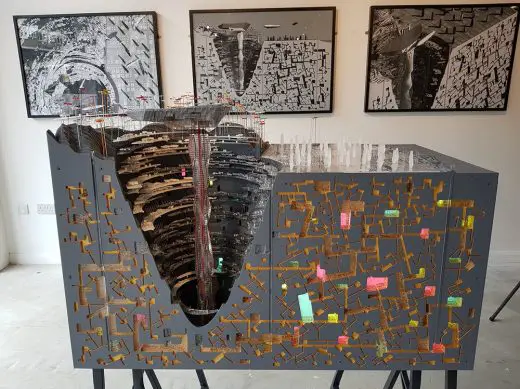
photograph courtesy of University of Huddersfield
Royal Academy of Arts Architecture Exhibition 2018
Royal Academy of Arts Exhibition – Andrea Palladio
Royal Academy Summer Show 2012
Royal Academy Summer Exhibition – architectural installation
Design: Chris Wilkinson, Wilkinson Eyre Architects
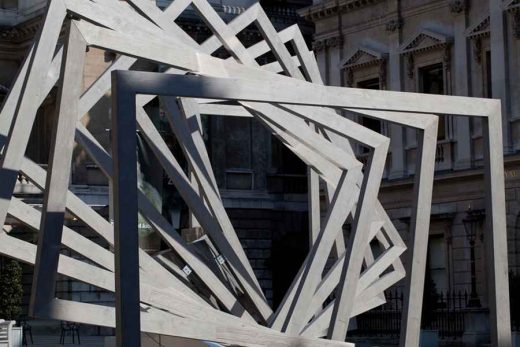
photo : Luke Hayes
Royal Academy of Arts, London: Burlington House, Piccadilly
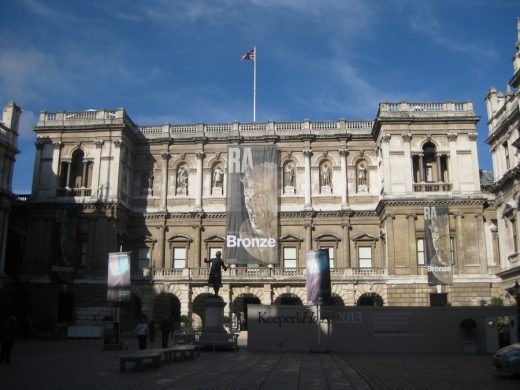
photograph © Adrian Welch
Phone: 020 7300 8000
Nearest tube stations: Piccadilly Circus or Green Park
Location: Royal Academy of Arts, Burlington House, Piccadilly, London W1J 0BD, UK
London Architecture
London Architecture Links – chronological list
London Architecture Tours by e-architect
Building close by to the east: Piccadilly Circus
Taj Crowne Plaza London St James, 51 Buckingham Gate
Design: Broadway Malyan
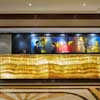
image from architects
Taj Crowne Plaza London St James
Saatchi Gallery, Chelsea
Design: Allford Hall Monaghan Morris
Royal Courts of Justice London
Buildings / photos for the Royal Academy of Arts Royal Academicians 2019 page welcome

